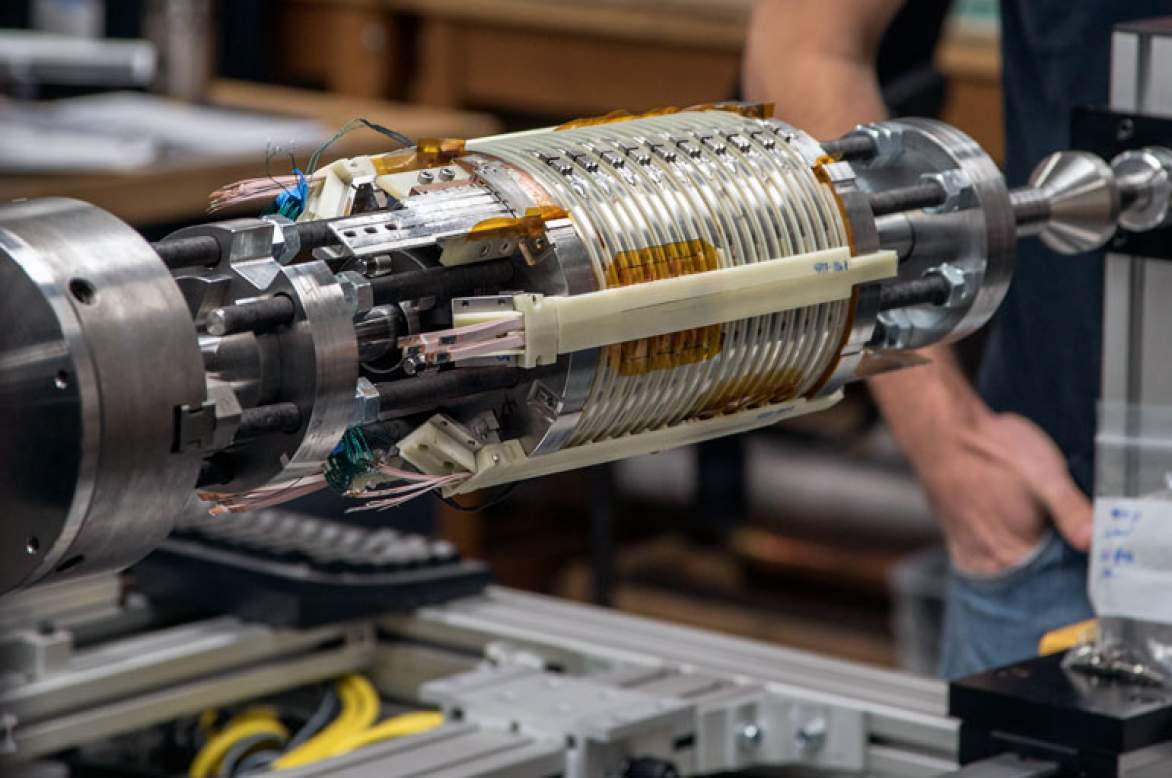The global Superconducting Magnetic Energy Storage (SMES) market was estimated at USD 75.3 million in 2023, and it’s anticipated to reach USD 235.45 million in 2033, with a CAGR of 12.12% during the forecast years 2024-2033.
Introduction
Superconducting Magnetic Energy Storage (SMES) is an advanced energy storage technology that utilizes superconducting coils to store energy in the form of a magnetic field. This stored energy can be rapidly released to the grid when needed, making SMES systems valuable for grid stabilization, power quality improvement, and energy management applications. This overview delves into the SMES market, exploring its introduction, opportunities, assessment, competitive strategies, and objectives.
Opportunities
- Grid Stability Enhancement: SMES systems offer fast response times and high power density, making them ideal for enhancing grid stability by providing rapid and precise voltage and frequency regulation. As grids become more interconnected and renewable energy sources increase, the demand for grid stabilization solutions like SMES is expected to rise.
- Renewable Energy Integration: The intermittency and variability of renewable energy sources like solar and wind pose challenges for grid operators. SMES systems can store excess renewable energy during periods of low demand and release it during peak demand, helping to balance supply and demand and integrate renewable energy more effectively into the grid.
- Power Quality Improvement: SMES systems can mitigate power fluctuations, voltage sags, and other power quality issues, improving the reliability and quality of electricity supply. This is particularly important for sensitive industries such as manufacturing, data centers, and healthcare facilities that require stable and high-quality power.
- Electric Vehicle Charging Infrastructure: As the adoption of electric vehicles (EVs) increases, there is a growing need for high-power charging infrastructure. SMES systems can provide rapid charging capabilities by storing energy during off-peak hours and delivering it quickly to EV charging stations during peak demand periods.
- Microgrid Integration: SMES systems can enhance the resilience and stability of microgrids by providing backup power and balancing energy supply and demand within the microgrid. This is especially valuable for remote or islanded microgrids where grid connection is unreliable or unavailable.
Assessment
The SMES market is still in the early stages of development, but it holds significant potential for growth and innovation. Key factors driving market growth include advancements in superconducting materials, improvements in energy storage technology, increasing demand for grid stability solutions, and supportive government policies and incentives for energy storage deployment.
Market challenges include high upfront costs, technical complexities associated with superconducting materials and cryogenic cooling systems, and competition from alternative energy storage technologies such as lithium-ion batteries and pumped hydro storage.
However, ongoing research and development efforts, collaborations between industry players and research institutions, and increasing investments in energy storage infrastructure are expected to drive market expansion and overcome these challenges in the coming years.
Competitive Strategies
- Technology Innovation: Companies in the SMES market should focus on continuous innovation to improve the performance, efficiency, and cost-effectiveness of SMES systems. This includes advancements in superconducting materials, cryogenic cooling systems, magnetic field stability, and energy storage capacity.
- Market Diversification: To capitalize on diverse market opportunities, companies should diversify their product offerings and target multiple sectors such as grid stabilization, renewable energy integration, industrial applications, and electric vehicle charging infrastructure.
- Strategic Partnerships: Collaborations with utilities, grid operators, renewable energy developers, and other stakeholders can help companies penetrate new markets, access funding opportunities, and deploy SMES solutions more effectively.
- Cost Reduction Strategies: Cost remains a significant barrier to the widespread adoption of SMES systems. Companies should focus on reducing manufacturing costs, optimizing system design, and leveraging economies of scale to make SMES more competitive with other energy storage technologies.
- Regulatory Engagement: Engaging with policymakers and regulatory authorities to advocate for supportive policies, incentives, and regulatory frameworks for energy storage deployment can create a more favorable market environment for SMES systems.
Receive the FREE Sample Report of Superconducting Magnetic Energy Storage (SMES) Market Research Insights @ https://stringentdatalytics.com/sample-request/superconducting-magnetic-energy-storage-(smes)-market/14383/
Market Segmentations:
Global Superconducting Magnetic Energy Storage (SMES) Market: By Company
Super Power
Hyper Tech Research
Southwire Company
Luvata
Superconductor Technologies
Global Superconducting Magnetic Energy Storage (SMES) Market: By Type
Low Temperature SMES
High Temperature SMES
Global Superconducting Magnetic Energy Storage (SMES) Market: By Application
Power System
Industrial Use
Research Institution
Others
Regional Analysis of Global Superconducting Magnetic Energy Storage (SMES) Market
All the regional segmentation has been studied based on recent and future trends, and the market is forecasted throughout the prediction period. The countries covered in the regional analysis of the Global Superconducting Magnetic Energy Storage (SMES) market report are U.S., Canada, and Mexico in North America, Germany, France, U.K., Russia, Italy, Spain, Turkey, Netherlands, Switzerland, Belgium, and Rest of Europe in Europe, Singapore, Malaysia, Australia, Thailand, Indonesia, Philippines, China, Japan, India, South Korea, Rest of Asia-Pacific (APAC) in the Asia-Pacific (APAC), Saudi Arabia, U.A.E, South Africa, Egypt, Israel, Rest of Middle East and Africa (MEA) as a part of Middle East and Africa (MEA), and Argentina, Brazil, and Rest of South America as part of South America.
Click to Purchase Superconducting Magnetic Energy Storage (SMES) Market Research Report @ https://stringentdatalytics.com/purchase/superconducting-magnetic-energy-storage-(smes)-market/14383/?license=single
Objective
The primary objective of stakeholders in the SMES market is to accelerate the commercialization and widespread adoption of SMES technology by:
-
- Advancing technology innovation to improve performance, efficiency, and cost-effectiveness.
- Expanding market opportunities through diversification, strategic partnerships, and regulatory engagement.
- Overcoming technical, economic, and regulatory barriers to market entry and growth.
- Establishing SMES as a reliable and cost-effective solution for grid stability, renewable energy integration, and other energy management applications.
- Contributing to the transition towards a more sustainable, resilient, and decentralized energy infrastructure.
About Stringent Datalytics
Stringent Datalytics offers both custom and syndicated market research reports. Custom market research reports are tailored to a specific client’s needs and requirements. These reports provide unique insights into a particular industry or market segment and can help businesses make informed decisions about their strategies and operations.
Syndicated market research reports, on the other hand, are pre-existing reports that are available for purchase by multiple clients. These reports are often produced on a regular basis, such as annually or quarterly, and cover a broad range of industries and market segments. Syndicated reports provide clients with insights into industry trends, market sizes, and competitive landscapes. By offering both custom and syndicated reports, Stringent Datalytics can provide clients with a range of market research solutions that can be customized to their specific needs.
Reach US
Stringent Datalytics
+1 346 666 6655
Social Channels:




Leave a Reply